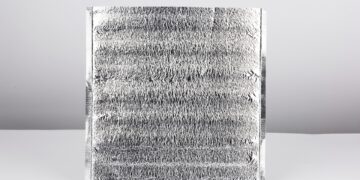Heavy equipment is essential for heavy-duty tasks, from clearing construction sites to working in agriculture. However, cleaning these machines is no small feat and comes with its own set of hazards. Knowing how to stay safe while cleaning heavy equipment is vital to protect yourself and ensure proper machinery maintenance. This guide will walk you through essential safety practices, helpful tips, and tools to make sure your cleaning process is effective and risk-free.
Know Your Equipment: Safety Starts Here
Every machine is different, and safety starts with understanding your equipment. Whether you’re working with an excavator, loader, or bulldozer, you should take the time to read the operator’s manual and familiarize yourself with key parts like the undercarriage, hydraulic components, and electrical systems. Being informed about the equipment’s structure and mechanisms will help you handle it properly during the cleaning process. For instance, certain sensitive components, like electrical panels, require extra caution to avoid damage or injury.
Gather the Right Tools for the Job
The proper tools can protect you from unnecessary hazards while ensuring an efficient cleaning process. Heavy-duty cleaning supplies, such as pressure washers, degreasers, and industrial brushes, are essential tools for undercarriage maintenance. You can also invest in a scraper tool to remove compacted debris and heavy mud buildup. Using the right equipment minimizes physical strain and allows you to clean parts effectively without risking damage to the machinery.
Tips for Cleaning Heavy Equipment
When cleaning your equipment, focus on removing dirt and debris that may impact efficiency or damage key parts. Start by manually clearing large chunks of mud and grime before using a pressure washer for detailed cleaning. Pay close attention to high-wear areas like the undercarriage and engine compartment. Avoid using excessive force on sensitive components, as this could result in permanent damage or safety risks later on.
Never Skip Personal Protective Equipment (PPE)
Before you get started, make sure you’re wearing the right PPE for the job. Heavy equipment cleaning often involves exposure to strong chemicals, sharp objects, and high water pressure that can harm you if you’re not properly protected. Equip yourself with gloves, non-slip boots, safety goggles, and, if necessary, a respirator when dealing with harsh cleaning agents. Skipping PPE can lead to unnecessary injuries or health risks.
Protect Your Surroundings
Cleaning heavy equipment doesn’t just pose risks to you but also to the environment and those nearby. Make sure nobody is too close while you are operating powerful cleaning tools like pressure washers. Position the equipment on a flat, stable surface to prevent accidental slips or tipping. Additionally, contain runoff water and cleaning solutions to prevent environmental contamination, especially when using harsh chemicals.
Knowing how to stay safe while cleaning heavy equipment is an essential skill for operators. By understanding your machinery, using the right tools, and applying proper safety measures, you create a safer work environment and keep your equipment in top shape. Start implementing these tips today and take the guesswork out of keeping your machinery clean and protected.




















































































